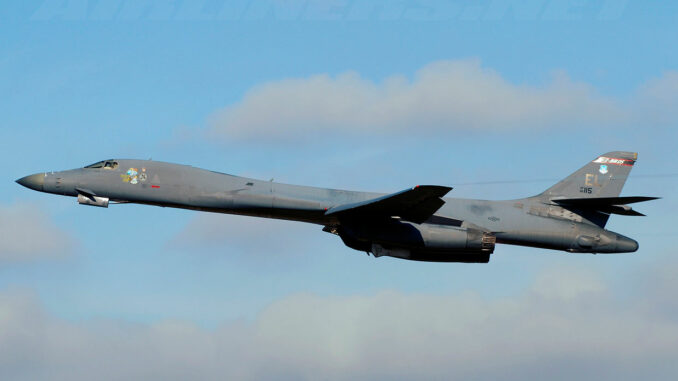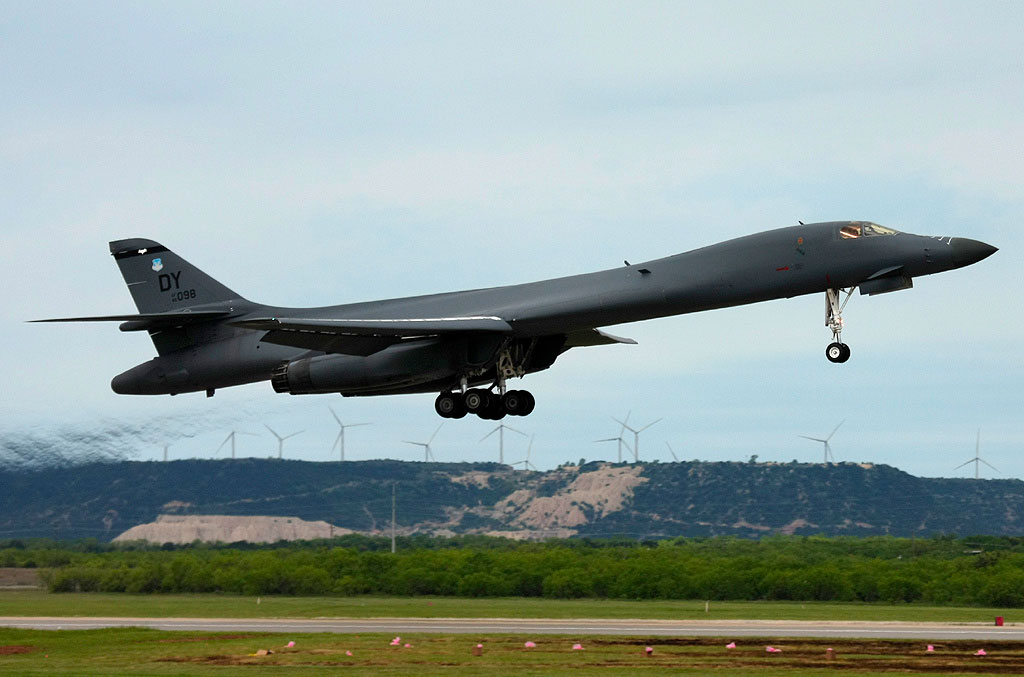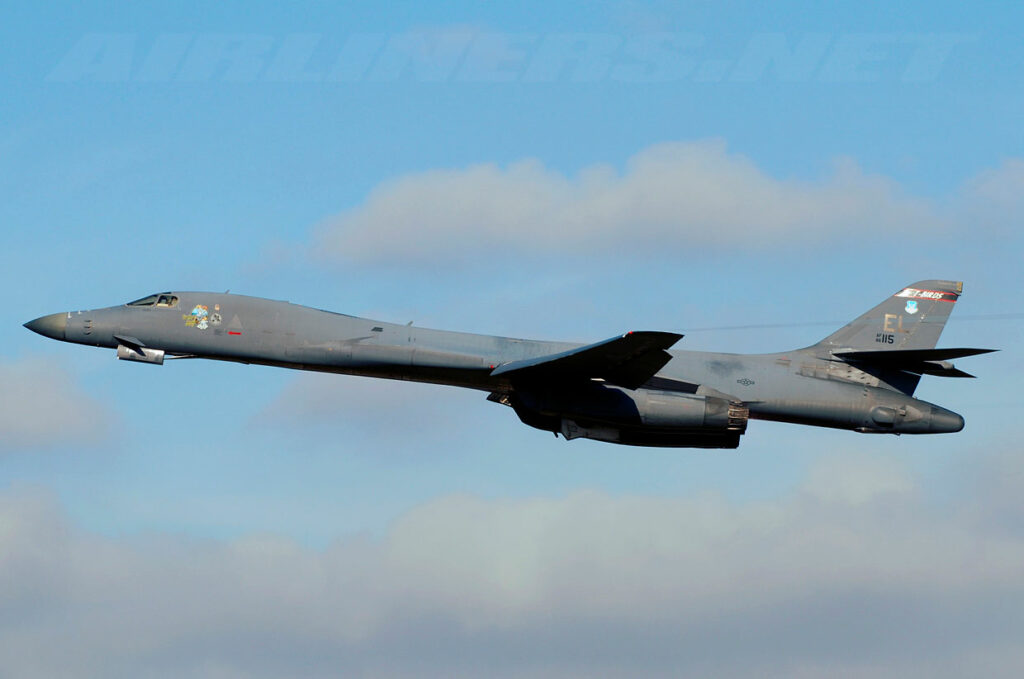
US Air Force B-1B Lancers are being deployed to Japan for the first time, strengthening the US strategic posture in the Indo-Pacific.
On April 15, 2025, two US Air Force B-1B Lancer strategic bombers landed at Misawa Air Base in Japan, marking the first deployment of this type as part of a Bomber Task Force (BTF) mission. This initiative is part of the Pacific Deterrence Initiative (PDI), which aims to strengthen deterrence against China. The B-1Bs, capable of carrying up to 34,000 kg of munitions, are equipped with AGM-158C LRASM anti-ship missiles, giving them advanced maritime strike capabilities. Their presence in Misawa allows for rapid power projection in sensitive areas such as the South China Sea and the Taiwan Strait.
A deployment unprecedented since the Vietnam War
The stationing of B-1B Launchers in Misawa is a first since the Vietnam War. This deployment is part of a strategy of operational flexibility, enabling a rapid response to regional crises. The Misawa base, located in northern Japan, offers a strategic position for operations throughout the Indo-Pacific.
The B-1Bs conducted a training flight over the Korean Peninsula prior to their arrival, demonstrating their ability to operate in coordination with allied forces, including US F-16s and South Korean F-35s. This type of mission enhances interoperability and preparedness in the event of conflict.

The Pacific Deterrence Initiative: a strategic response
The Pacific Deterrence Initiative (PDI) is a US Department of Defense initiative aimed at strengthening military presence in the Indo-Pacific. For fiscal year 2025, a budget of $9.9 billion has been allocated to the PDI, covering investments in infrastructure, logistics, and long-range strike capabilities.
The PDI aims to establish precise and resilient strike networks along the first island chain, including cruise, ballistic and hypersonic missile systems. This strategy deters aggressive actions by ensuring a rapid and effective response capability.
The capabilities of the B-1B Lancer: a formidable strike force
The B-1B Lancer is a supersonic strategic bomber capable of carrying up to 34,000 kg of munitions. With a range of 7,400 km without refueling, it can reach distant targets quickly. Its maximum speed is Mach 1.2, or approximately 1,450 km/h.
Since 2018, the B-1B has been equipped with the AGM-158C LRASM missile, a long-range stealth cruise missile designed to neutralize naval targets. The LRASM has an estimated range of over 900 km and uses advanced sensors to identify and strike specific targets, even in contested environments.
The first island chain: a strategic position
The first island chain is a series of archipelagos stretching from Japan to Malaysia, passing through Taiwan and the Philippines. This area is crucial for controlling sea lanes and projecting power in the Indo-Pacific. The deployment of B-1Bs to Misawa provides operational coverage of this region, offering rapid response capability in the event of a crisis.
However, this forward position also exposes the aircraft to increased risks in the event of conflict, including ballistic and cruise missile attacks. The US strategy therefore provides for fallback bases in the second island chain, including Guam and the Mariana Islands, to ensure the resilience of deployed forces.

Geopolitical consequences and regional reactions
The deployment of B-1Bs to Misawa comes amid growing tensions in the Asia-Pacific region. China perceives these moves as an attempt to encircle it and has expressed its dissatisfaction with the increased US military presence in the region.
US allies such as Japan, South Korea, and the Philippines see the deployment as a sign of US commitment to their security. Joint military exercises, such as the Balikatan maneuvers between the US and the Philippines, reinforce this cooperation.
Outlook and future implications
The deployment of B-1Bs to Misawa could foreshadow a more regular presence of US strategic bombers in Japan. This development would require additional investment in infrastructure and logistics to support these operations.
Furthermore, the integration of new technologies, such as hypersonic missiles, could increase the deterrence capability of US forces in the region. However, this could also intensify the arms race in the Asia-Pacific, with implications for regional stability.
War Wings Daily is an independant magazine.